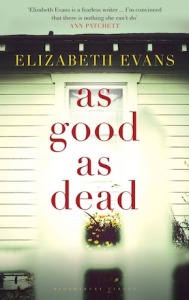Margaret Atwood: ‘Rape Fantasies’
by Elizabeth Evans ‘It’. Ten times in the first two paragraphs of Margaret Atwood’s classic ‘Rape Fantasies’, the chatterbox narrator, Estelle, avoids naming rape – plainly the topic she wants to address. And who is this Estelle? Oh, she’s quite the card, quite the jokester about rape, although she does take constant detours from her topic.
‘It’. Ten times in the first two paragraphs of Margaret Atwood’s classic ‘Rape Fantasies’, the chatterbox narrator, Estelle, avoids naming rape – plainly the topic she wants to address. And who is this Estelle? Oh, she’s quite the card, quite the jokester about rape, although she does take constant detours from her topic.
So we wonder: What’s going on here? And ‘Rape Fantasies’ keeps us wondering until the penultimate paragraph. Defying both literary conventions and our expectations, the story pulls off the rare feat of being a black comedy that earns a heartbreaking conclusion.
My giving away the story’s surprises won’t spoil the story for those who have yet to read it. I believe that this brief appreciation of the surprises will prove an enticement. Truly, you could read Atwood’s tour de force dozens of times and continue to find pleasure in its inventiveness and Atwood’s astonishing knowledge of the human heart (also, if you happen to be a writer, you’ll gain much from studying its valuable lessons in the art of surprise).
A surprise in setting
As a teacher of fiction-writing workshops, I’m forever promoting the early establishment of setting, an arena in which the story’s action can credibly unfold. Atwood manages a fine trick with setting in ‘Rape Fantasies’. After Estelle launches the topic of ‘it’ she explains that ‘it’ came up during a lunch-hour game of bridge with her office co-workers “day before yesterday, that would be Wednesday.” Estelle then provides the co-workers’ discussion of their sexy ‘rape fantasies’; the particulars of the bridge game they played on Wednesday; and the tidbits of gossipy personal information about her co-workers. The lunchroom is thus established as the story’s initial setting. The story will feature other settings as it moves away from talk of the lunchroom and proceeds to gabby Estelle’s sharing of five additional rape fantasies (two occur on a dark street; two in her apartment; one in her mother’s cellar).
Only when we reach the end of ‘Rape Fantasies’, however, do we realise that the story’s actual – and very relevant – setting is the one from which the narrator speaks, the ‘here’ that she mentions in the story’s penultimate paragraph. ‘Here’ is a bar where our lonely, single, chatterbox speaks to a man…
A surprise in point-of-view
… Yes, once we reach that penultimate paragraph, we realise with a lovely start (that I’ll later explain contains a chill): We’re reading a dramatic monologue.
Dramatic monologue (a single character addressing and interacting with a specific audience whose presence – and words and actions – we know of only through clues revealed by the narrator) can lead to awkward exposition. Few writers employ it. Atwood, however, turns dramatic monologue on its head. Generally, in dramatic monologue, the writer quickly establishes the monologist’s audience, but Estelle uses a ‘you’ that initially appears simply informal, as if she addresses us, the anonymous beings that receive first-person stories, and then sometimes her ‘you’ seems an informal substitute for ‘I’ (“the lunchroom, I mean you’d think you could some peace and quiet in there”). A few skilfully embedded clues do suggest a particular audience (“it’s all right if I tell you,” Estelle says after revealing that she snoops in co-worker’s employment files); yet – and this is perhaps the story’s most striking narrative tactic – Estelle never indicates any sort of response from an audience, so it is easy for readers to glide over and even forget those clues.
Estelle has a clouded vision of herself and how she appears to others; she seems unaware that the judgements she levies against her co-workers may be one reason she is friendless.”
A surprise in unreliable narration
At the story’s outset, Estelle might seem like some gassy bore you’d try to escape in real life, but Atwood keeps her interesting. We soon find that, though Estelle tries to appear lighthearted and comfortable making jokes about rape and rape fantasies, she is in fact a friendless, frightened soul – and an unreliable narrator. A deep unease with the topic of rape is suggested both by her ‘it’ and the series of detours she takes from the topic. She interrupts her retelling of her co-workers’ rape fantasies not only with that revelation of her snooping, but also with a boorish running account of the office bridge game (“I had a bare twelve points counting the singleton with not that much of a bid in anything. So I said one club…”) and details about her own life, such as “I was the kind of little girl who buried dead robins.” The story makes evident that Estelle shares this welter of information because she wants to be known, to have human connection, but Estelle has a clouded vision of herself and how she appears to others: she characterises her snooping as harmless; she seems unaware that the judgements she levies against her co-workers may be one reason she is friendless, and also that the various rape fantasies that she shares in the course of the story are as unrealistic as those of her co-workers.
 The surprise of ‘comic’ rape fantasies
The surprise of ‘comic’ rape fantasies
Estelle informs her co-workers that the ‘rape fantasies’ they describe over lunch are not rape fantasies, but fantasies of exciting sex with strangers. “Rape,” Estelle says, “is when they’ve got a knife or something and you don’t want to.” The ‘rape fantasy’ Estelle offers her co-workers, however, is a comic scenario: her would-be-rapist politely assists Estelle in a search through her handbag for the plastic lemon which, once found, she uses to squirt stinging juice into the man’s eyes.
After Estelle’s narration moves on from the initial scene of the office bridge game, she proceeds to share five more rape fantasies. Always beginning with the effective repetition of the menacing dark line, “He grabs my arm,” each one proves to be a fantasy of a foiled rape. Frightened by the prospect of rape, confounded by the idea of one person’s visiting such brutality on another, in her own fantasies – reported with comic touches that apparently keep her sense of danger at bay – Estelle always manages to talk with her would-be rapist and to “end up feeling sorry for the guy.” Estelle finds something in common with her would-be rapists. She, for instance, has a terrible cold in one fantasy and so does the would-be rapist (“it’d be like raping a bottle of LePage’s Mucilage the way my nose is running,” reports jokey Estelle), and so she fixes the man a Neocitran and scotch, and – rape avoided – the pair sits up together and watches the Late Show.
The surprise reappraisal of the narrator
It is her recognition of the danger of rape that drives Estelle to create fantasies in which she rescues herself through conversation and kindness. But – a smart added surprise from Atwood – Estelle’s last fantasy reveals that her isolation is so immense and desperate that she has imagined a would-be rape transformed (albeit fuzzily) into a romance, and it is just as we comprehend the depth of the narrator’s loneliness that we also reach that point in the story where we ‘get it’, and that chill I mentioned earlier fills our hearts: We’re reading a dramatic monologue… and her audience is a male bar customer.
“I don’t know why I’m telling you all this,” Estelle says in the next-to-last paragraph, “except I think it helps you get to know a person, especially at first, hearing some of the things they think about.” Her entire nervous spiel, start to finish, now reminds us far too much of her fantasies. In the story’s last lines, Estelle says, returning to the subject of rape, “once you let them know you’re human… I don’t see how they could go ahead with it, right?” But, as before, there is no indication of how the man at the bar responds or whether he responds at all. Perhaps he is a danger to vulnerable Estelle, perhaps not, but the story’s comic tone now goes swirling down the drain of Estelle’s essential solitude. It appears that she has failed to make a human connection, and she has come no further in understanding the ugliness of rape: “I mean, I know it happens, but I just don’t understand it.”
In his masterful ‘Guests of the Nation’, Frank O’Connor employs a carefully drawn Irish soldier and his unforgettable grief at the horror of war. The story was published in 1931, but never grows dated. So too ‘Rape Fantasies’, first published in Atwood’s 1977 collection Dancing Girls. Using a lonely, lively, and sometimes foolish woman as a lens, Atwood shines a brilliant, lasting beam on another incomprehensible aspect of human existence – and we are all the better for it.
 Elizabeth Evans was born, raised, and educated in Iowa, and received an MFA at the Iowa Writers’ Workshop. Professor Emeritus for the Program in Creative Writing at the University of Arizona, she is the author of the story collections Suicide’s Girlfriend and Locomotion, and the novels The Blue Hour, Carter Clay, Rowing in Eden and As Good As Dead, now published by Bloomsbury Circus. Read more.
Elizabeth Evans was born, raised, and educated in Iowa, and received an MFA at the Iowa Writers’ Workshop. Professor Emeritus for the Program in Creative Writing at the University of Arizona, she is the author of the story collections Suicide’s Girlfriend and Locomotion, and the novels The Blue Hour, Carter Clay, Rowing in Eden and As Good As Dead, now published by Bloomsbury Circus. Read more.
elizabethevans.org
Facebook: Elizabeth Evans
Author portrait © Steve Reitz
Margaret Atwood’s Dancing Girls and many other works are published by Vintage. Read more.

